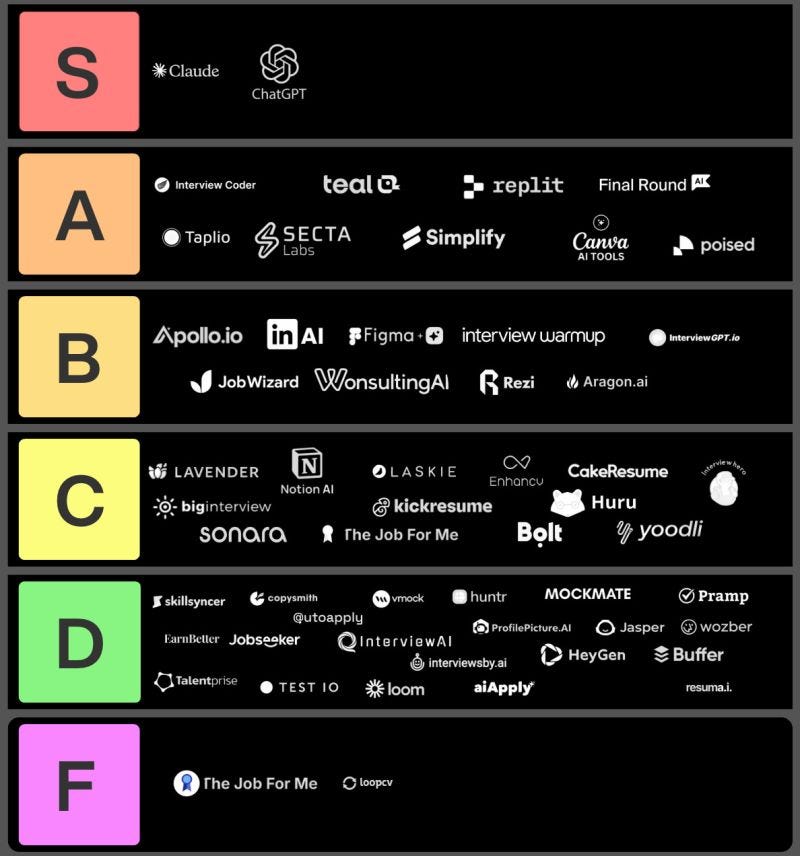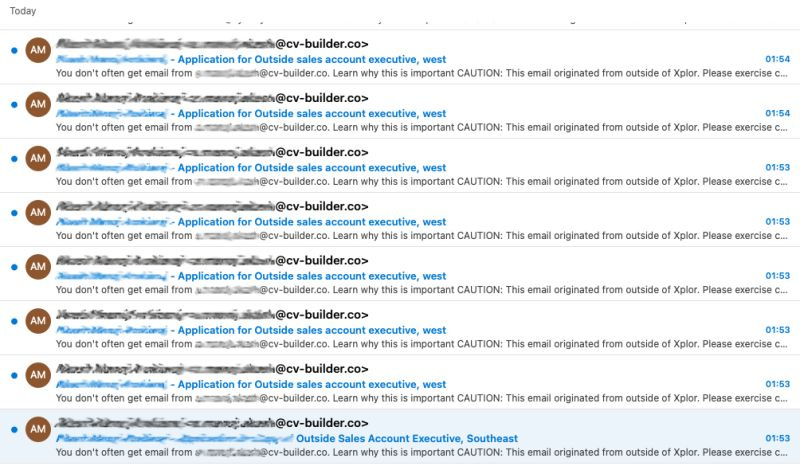Job Search Greatest Hits - AI and the Green Banner
Plus a video walkthrough of how to find who you're looking for on LinkedIn
This week’s edition is a real Greatest hits package! You’ll get the absolute pros and cons of using AI (ranked!) and the data behind the Open To Work Banner.
📌 Reminder: The Notion Job Tracker is live! Track your applications, stay organised, and automate follow-ups. Grab it here, and let me know how it’s working for you.
And if you’re not already a subscriber, get weekly job tips straight to your inbox every Friday from 2 Recruiting Leaders, Darren (Head of TA @ Ericsson) and Matt (Head of TA @ Mews)
🎙️New Open To Work Podcast Episode
What does a Recruiter actually do?
This week Matthew is joined by MD of AJ Exec, Steve Jacobs, to discuss:
⤷ What’s the difference between an in-house and agency recruiter?
⤷ How to best work with a recruiter
⤷ When and how to follow up with a recruiter
🎧 Listen on Spotify
▶️ Watch on YouTube
What’s happening this week?
⤷ The best AI tools - RANKED - with some notable exceptions
⤷ How to find someone on LinkedIn
⤷ The curse of auto-apply tools
⤷ The Open To Work Banner debate rages on
Featured Post: The best job search tools ranked
By Aakash Gupta
We featured Aakash last week in our newsletter, and he’s come out again with quite a different take on which AI tools can enable your job search.
Last week many of his AI tools that could both hinder and help your job search, but it’s hard to differentiate to the untrained eye exactly which will be doing which. So this week’s breakdown Aakash shared his ranking from A-F. Some interesting observations:
⤷Only two job search specific tools make the A list. Teal and Final Round AI were the only products that made his A list, and they’re all behind the necessities of Claude or ChatGPT.
⤷There was only 1 Resume builder. Whilst there were tools that would help you build a nice looking Resume, only one made the cut in the entire list - Rezi.
⤷All of these tools can be good enablers, but they require you to put in the work.
The best job searches still require introspection, effort and proactivity. Using any of the tools featured in this list can only supplement a job search, they can’t do it for you, and using many of these in combination is the best outcome.
In reality, there are no tools that can replace a thoughtful job search plan, proactivity, and building human connections. AI can enable you in all three of these departments, but they can’t do it for you.
Notion Job Tracker is Live!
If you're tired of manually tracking job applications, this tool helps you:
⤷ Stay organised with a clear dashboard
⤷ Automate follow-ups so you never miss an opportunity
⤷ Track job applications without messy spreadsheets
📌 Reminder: Clear the existing data before using it! Let me know if you need a walkthrough video.
How to find the right person on LinkedIn
By Matthew Parker
Our very own Podcast host quietly dropped a Gem of a video showing exactly how he finds prospects on LinkedIn. Here’s exactly how you do it:
⤷ Build your target list of companies based on your ideal role
⤷ Go onto the company page on LinkedIn
⤷ Go to the “People” section
⤷ In the search bar, test different titles to find the naming convention for that business
⤷ Iterate until you’ve found the right prospect to approach, ideally someone on the team or the hiring manager.
Top Tip - don’t be afraid to go right to the top.
AI Tools can hurt your job search
By Stefan Welack
AI tools that auto apply can hurt your job search. Why? Because every single application looks practically identical. When everyone uses AI to “differentiate”, no one is differentiating themselves.
Stefan shared an important reminder to all of us that it’s painstakingly obvious on the other side when Auto-Apply tools are being used.
Our recommendation? Don’t use them.
The Open To Work Banner debate rages on
By Matthew Parker
All of the job search hits are coming out today.
Recently a friend of the Open to Work Community landed a job, mere weeks after posting the Open To Work Banner on their LinkedIn. This immediately prompted the discussion of it’s value (again). Here’s the summary:
⤷ People who turn themselves discreetly Open To Work get 40% more messages from recruiters on LinkedIn
⤷ People who use the banner get an addition 25% increase in messages
⤷ LinkedIn actively incentivises recruiters to reach out to people who are Open To Work by rewarding them with free Inmail responses.
Next time you see this debate on LinkedIn, take a real look at who is saying it “looks desperate” or “sends the wrong message”. Even friends of our community have spoken out against the “green banner”, but they are also selling products to job seekers. 🤔
Ultimately, it’s your decision. Test it, see if it works, turn it off, totally your call! But the data is in your favour if you decide to turn it on.
Key weekly takeaways
⤷ AI is a friend, but can also work against you. Nothing replaces your hard work.
⤷ We all have our own relationship with the Open To Work banner, but just remember that it’s yours and no one in the Open To Work family will think any different regardless of what you decide 😄
Find everything on the Open To Work Toolkit
The toolkit is live and evolving. Let me know what’s working for you and what needs improvement.
Here’s to a successful job search in 2025.
Warm regards,
Matthew Parker
Founder of Open To Work Community
Darren Bush
Founder of Open To Work Toolkit
www.gethiredtoolkit.com |




HI Matthew, your numbers about "Open to Work" are simply off. LinkedIn has only ever shared official data once—back in 2020, six months after the feature launched. (Many people have been repeating these numbers incorrectly over the years).
According to that article, over 3 million users had added the public photo frame, and those who did were 40% more likely to get emails from recruiters. That’s it.
It also mentioned that users with the frame were 20% more likely to receive messages from their network.
Nowhere did LinkedIn compare results between the public setting and the recruiter-only setting. That comparison doesn’t exist.
And let’s not forget—this data is five years old and covered just 0.41% of their total user base. Today, 30% of people are open to work. Whatever it meant back then, it’s clearly irrelevant now.